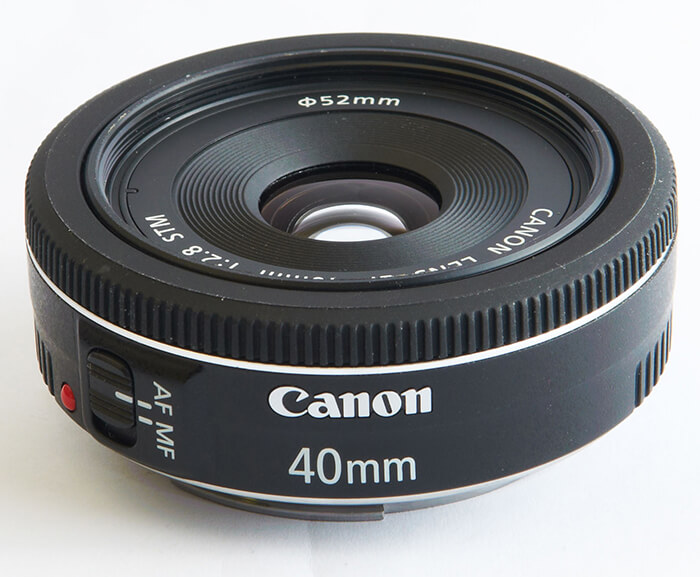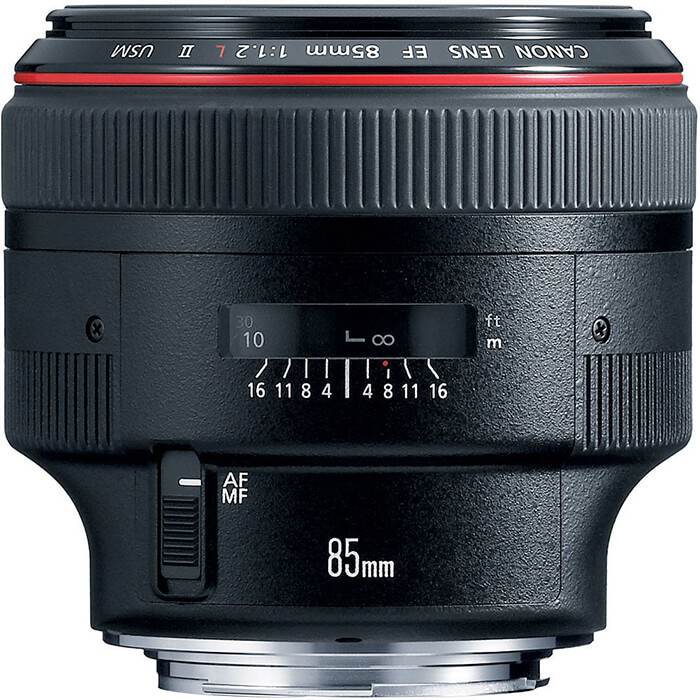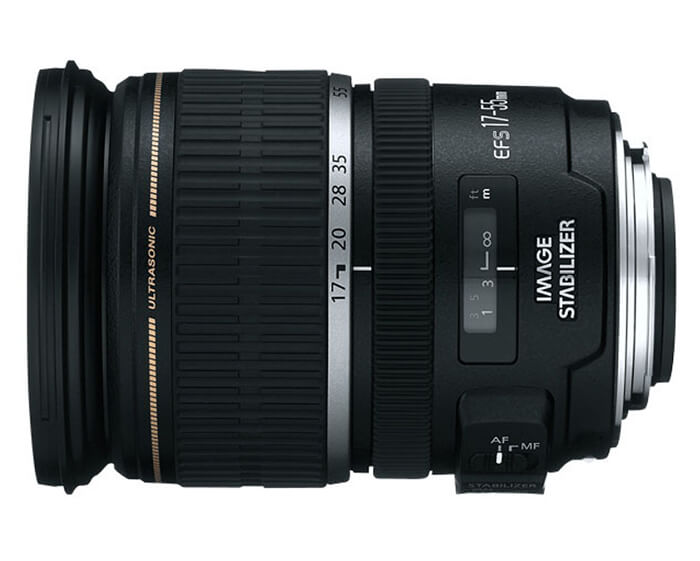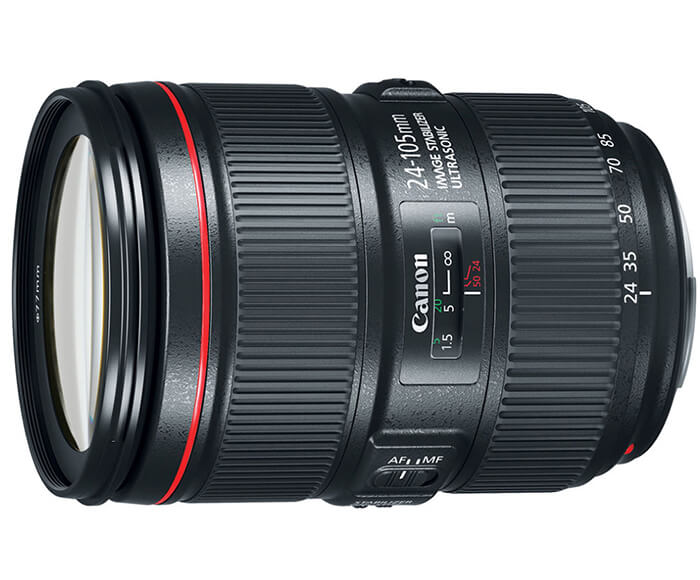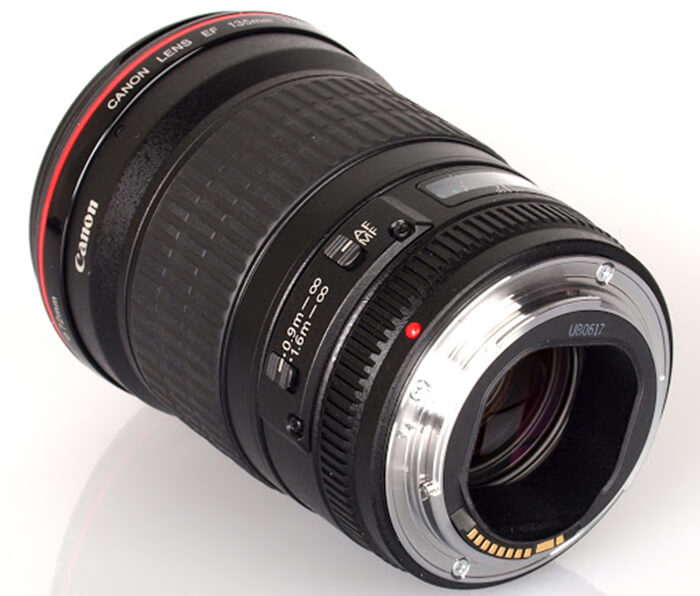Initially, Canon cameras used Nikon lenses, and there was no fierce competition between the companies. The spirit of rivalry originated in the 80s of the XX century. Consumers have suffered from competition: components for SLR cameras have ceased to be universal. Canon lens mounts are now only suitable for cameras of the same name.
Upon purchase, the cameras are equipped with a simple whale lens. It does not differ in high-quality optics or aperture ratio, but it gives the amateur the opportunity to experiment with different genres. But as comprehension of photo art begins, beginners get a taste and want to get sharper and more juicy photos. The logical question is: which Canon lens to choose? There is no definite answer to it.
First of all, you need to decide on genre preferences. For portraits, optics with a fixed focal length is considered the best, for insects – macro lenses, and for wildlife or sporting events – telephoto lenses. For each type of shooting, Canon produces dozens of models: from budget options for $ 200-300, to expensive professional optics worth more than $ 10,000.
Regardless of the price, there are more or less successful models. Lines of lenses are constantly updated. Our ranking contains the best modern Canon lenses of 2021-2022, which are recognized by photographers. The review is based on performance and reviews.
For more our buying guides, take a look at the popular links: Canon Cameras, Nikon Cameras, Nikon Lenses.
Quick Answer: The 12 Best Canon Lenses 2023
- Canon EF 40mm f/2.8 STM Lens
- Canon EF 50mm f/1.4 USM Lens
- Canon EF 85mm f1.2L II USM Lens
- Canon EF-S 18-135mm f/3.5-5.6 IS STM Lens
- Canon EF-S 17-55mm f/2.8 IS USM Lens
- Canon EF 24–105mm f/4L is II USM Lens
- Canon EF-M 55-200mm f/4.5-6.3 IS STM Lens
- Canon EF 70-200mm f/4L USM Lens
- Canon EF 135mm f/2L USM Lens
- Canon EF-S 10-22mm f/3.5-4.5 USM SLR Lens
- Canon EF 17-40mm f/4L USM Wide Angle Lens
- Canon EF 28mm f/1.8 USM Wide Angle Lens
Canon Lens Reviews
Best Standard Constant Ph Lenses for Canon Cameras
#1 Canon EF 40mm f/2.8 STM Lens
Highlights of Canon EF 40mm f/2.8:
Filter Size: 67mm
Minimum focus distance : 0.30m/11.81 inch
Lens Construction: 15 elements in 12 groups
The indisputable advantage of the lens is its versatility. Looking at the technical specifications, professionals can wrinkle their nose – “not this, not this,” but among fans, the Canon EF 40 mm f / 2.8 STM lens claims to be the best. It does not fall under the usual classifications: it is not a portrait portrait yet, but it is not a wide-angle in full. A slight distortion of the space with such characteristics of the review is inevitable, but it is not striking. At the same time, a shorter focal length than a fifty dollars allows the photographer to turn around in small rooms, as well as shoot landscapes and portraits on the street.
Experts and consumers note the high build quality, uncharacteristic for low-cost fix models. Bayonet metal ring, high-quality plastic with rubber inserts. The lightness and compactness of the lens helps out on trips. Pictures leaves a good impression. Smooth color transitions, a little leaves in pastel colors. Tenacious autofocus.
With a maximum aperture of 2.8, you should not count on spectacular bokeh, but blurring the background is pleasing to the eye. Owners of DSLR cameras note that in terms of severity of bokeh, the lens is not inferior to the budget fifty dollars with aperture of 1.8. But in dimly lit rooms, photographing them is not so comfortable. Without a flash, it is unlikely to achieve a decent result when using light from a window in the back of the room. Loud engine noise spoils the sound. The manufacturer promises smooth focusing of the STM, the lens is adapted for video shooting.
#2 Canon EF 50mm f/1.4 USM Lens
Highlights of Canon EF 50mm f/1.4:
The Hypersonic Motor (HSM)
Minimum focusing distance: 17.8 inch
Lens construction: 8 elements in 6 groups
The Canon lens rarely lingers on storefronts. It has become the most popular standard lens for two reasons:
- Every amateur photographer dreams of a fifty dollars
- This model embodies the best value for money.
The price remains affordable for amateurs, but the quality of the optics is enough to take portraits with a professional camera. Compared to Canon’s cheap fifty dollars, the EF 50 mm f / 1.4 USM lens looks solid. The weighty design – 290 grams – creates a pleasant first impression. And it is not deceiving.
Classic portraiture gives a sharp picture and a spectacular blur of the background. Beautiful bokeh appears thanks to the eight-petal diaphragm. The lens belongs to the fastest, it is pleasant to work with it without a flash, even in dimly lit rooms. But users note that opening aperture 1.4 is actually inoperative. Chromatic aberrations come out, image quality decreases.
The lens is suitable for both crop and full-frame cameras. But on the budget DSLRs the possibilities of optics will not be fully revealed, the optimal shooting option is a half-length portrait. Full-length portraits, landscapes will not look so advantageous, but to achieve a good result is real.
The ultrasonic autofocus motor works quickly and silently, but the automation often misses. The disadvantages of the lens include the unreliability of the design: a plastic ring for manual focusing requires delicate handling.
#3 Canon EF 85mm f1.2L II USM Lens
Highlights of Canon EF 85mm f1.2L II:
Ring-type UltraSonic motor (USM)
Closest focusing distance: 3.2 feet
Lens construction: 8 elements in 7 groups
Super-fast fix in all its glory will reveal itself in the twilight. Now your photographs in museums, salons and design rooms will gain inexpressible atmosphere before. The technique will accurately and confidently convey color tones, contrast and details. This lens is an indispensable tool for complex scenes at dusk, for working with chiaroscuro, volume, plasticity, numerous light sources and other highly artistic experiments.
Of the positive and negative opinions, we highlight the most striking. This product is praised by Canon for sharpness in the frame, careful color accuracy, reliable micro-contrast in the shadows – portraits in the dark work especially well, skin tones are amazingly transferred. Cons also available: a heavy lens block, slow focusing and a very shallow depth of field. But they are ready to forgive all the shortcomings for the rare quality of the optics to transmit the volume in digital, and even critics agree with this.
Best Standard Variable Diffraction Lens for Canon Cameras
#4 Canon EF-S 18-135mm f/3.5-5.6 IS STM Lens
Highlights of Canon EF-S 18-135mm f/3.5-5.6:
Inner focusing system
Aperture Range: f/3.5 to f/38
Lens construction: 16 elements in 12 groups
Despite the affordable cost, the lens has a solid appearance and impressive weight (480 grams). The characteristics are similar to the whale one, which is purchased complete with the camera, but wins due to the increased range of focal lengths – from wide-angle to telephoto lens. Of the advantages, owners of full-frame cameras note tenacious autofocusing. One should not expect much from the stabilizer in low price categories, but it is working.
Even more versatile is its quiet STM engine, adapted for shooting video. The stepper motor smoothly and quickly focuses on sharpness, without creaking sound and temporary loss of sharpness.
The main drawback is the low aperture, but for a budget lens this is predictable. EF-S 18–135 mm f / 3.5–5.6 IS STM is an excellent option for a beginner amateur photographer, representing the best value for money.
#5 Canon EF-S 17-55mm f/2.8 IS USM Lens
Highlights of Canon EF-S 17-55mm f/2.8:
Maximum aperture: f/2.8
Closest focusing distance: 1.15 feet
Lens construction: 19 elements in 12 groups
Among optics for full-frame cameras, the lens is considered expensive. The impressive cost inevitably dictates high demands on the quality of the optics. Judging by the reviews, the glass meets the expectations of amateur photographers.
A narrow range made it possible to achieve high performance optics: sharp frames are obtained at all focal lengths. Unlike budget models, the Canon EF-S 17–55 mm f / 2.8 IS US has a working 3-stage stabilizer. It is comfortable to shoot with short shutter speeds without a tripod. The lens is bright, suitable for shooting indoors without a flash near the window.
Some amateur photographers note the effect of vignetting and distortion, but “barrels” and “pillows” cannot be called pronounced. The only significant drawback for such an expensive glass is its unreliable housing. With prolonged use, the weighty “trunk” becomes loose and begins to fall out under its own weight. But despite the shortcomings, this optics will be the best replacement for the whale lens for full-frame cameras.
#6 Canon EF 24–105mm f/4L is II USM Lens
Highlights of Canon EF 24–105mm f/4L:
Aperture Range: f/4 to f/22
Air Sphere and Fluorine Coatings
Lens Construction: 17 elements in 12 groups
Being in search of universal solutions, be sure to look at the standard zoom with professional performance. Versatility lies in a large selection of shooting scenes in which you get consistent quality and clarity of pictures. Portrait, landscape, holiday, travel, video recording – nothing is impossible for the Canon L-Series maneuverable zoom. The lens is suitable for Canon full-frame cameras under the EF-S mount, as well as for cropped APS-C arrays.
The updated version marked “II” differs from the previous one by significant advantages:
- Improved resolution and sharpness in all parts of the image and throughout the zoom range
- Enhanced stabilization at slow shutter speeds
- Glare and stray flare eliminated thanks to Air Sphere Coating technology.
It is no coincidence that TIPA, a global organization of representatives of the press reviewing photo topics, in 2017 gave the model its primacy in the category of standard zoom lenses.
Best Telephoto Lenses for Canon Cameras
#7 Canon EF-M 55-200mm f/4.5-6.3 IS STM Lens
Highlights of Canon EF-M 55-200mm f/4.5-6.3:
Filter Size: 2.0 in./52mm diameter
Diagonal Angle of View: 27°50’–7°50′
Lens Construction: 17 elements in 11 groups
Here is one of the most optimal telephoto zoom lenses for shooting animals, sports and distant objects. The optical system is designed for mirrorless cameras. External features – in a concise “clean” design, in a wide zoom ring with miniature notches for a comfortable grip.
Gray matte plastic looks good, reduces the weight of the device (only 260 g). Technical stuffing works in two main directions: it provides silent and smooth focusing with an STM-motor (ideal for video mode) and optical stabilization with an efficiency of 3.5 steps.
According to commentators, the model provides good picture quality (clarity of detail, color saturation, excellent dynamic contrast) and is among the best in terms of lightness and compactness. Manual focus is pretty fast and accurate. The closest focal length is 1 m, so the lens is also suitable for the portrait genre: on open apertures you get excellent background blur.
#8 Canon EF 70-200mm f/4L USM Lens
Highlights of Canon EF 70-200mm f/4L:
Maximum aperture: 1:4.0
Closest focusing distance: 3.9 feet
Lens construction: 16 elements in 13 groups
The L-series telephoto lens has a robust design. Zoom and focus are hidden under a monolithic housing that protects the optics from moisture and dust. With such a glass, the professional photographer is not afraid of any vagaries of the weather.
Despite the modest aperture, the frames are sharp across the entire range of focal lengths. Canon EF 70-200 mm f / 4L USM is suitable for shooting parts, reporting, portraits on the street and in spacious studios. In an apartment, you can’t turn around with him, but this follows from the technical characteristics. The ultrasonic motor works tenaciously and almost accurately. Focus switch will become an indispensable tool for sports photojournalists.
With all the advantages, this model has a small weight, which makes shooting with hands possible. Frustrating is only the complete absence of the stabilizer, which is so necessary for telephoto lenses to compensate for hand shake when focusing over long distances.
#9 Canon EF 135mm f/2L USM Lens
Highlights of Canon EF 135mm f/2L:
Maximum aperture: f/2.0
Closest focusing distance: 3 feet
Lens construction: 10 elements in 8 groups
Among professionals, this L-series lens has gained fame as one of the sharpest. The definition of “ringing sharpness” is about him. Among other advantages: trustworthy assembly, focusing speed, rich picture, soft and even bokeh. The lens does not distort and will become a godsend for portrait painters who prefer to shoot outdoors or on deserted streets. You have to go far, so extra people and objects should not fall into the frame.
High aperture in conjunction with a full-frame camera “pull out” the picture at dusk or in a darkened room. With the EF 135 mm f / 2L USM it is comfortable to work even in concert shooting.
With excellent characteristics, professional optics have an adequate price, this is the best price / quality ratio in the Canon telephoto lens line. According to photographers, glass has virtually no flaws. The most demanding complain about the lack of a stabilizer, dust and moisture protection. The options are certainly convenient, but when choosing optics are not decisive.
Best Canon Wide Angle Lenses
#10 Canon EF-S 10-22mm f/3.5-4.5 USM SLR Lens
Highlights of Canon EF-S 10-22mm f/3.5-4.5:
Aperture Range: f/3.5 to f/27
EF-S-Mount Lens/APS-C Format
One Super-Ultra-Low Dispersion Element
The lens is suitable for shooting large-scale landscapes and cramped rooms, since almost all the surrounding space fits into the frame. Moreover, distortions are inevitable: knowing this feature of wide-angle, professional photographers use it as a creative technique. It is nice that chromatic aberration and dispersion are not so significant for the wide-angle. The lens copes well with backlight. Distortions are present, but with skillfully arranging the composition, they are not striking. Sharpness can not be called ringing, but it remains even at the edges of the frame.
The Canon EF-S 10–22 mm f / 3.5–4.5 USM has an excellent focusing distance of 24 centimeters, which makes it possible to emphasize the details of the foreground. Thanks to the ultrasonic motor, autofocus is fast and silent. Optics are distinguished by reliable build quality comparable to professional lenses.
The price is close to the glass of the luxury series, but at the same time, the aperture ratio is not encouraging. For full-frame cameras, the optics are a bit dark, but Canon’s best super-wide-angle lens cannot be found in this segment.
#11 Canon EF 17-40mm f/4L USM Wide Angle Lens
Highlights of Canon EF 17-40mm f/4L:
Maximum aperture: 1:4
Closest focusing distance: 0.9 feet
Lens construction: 12 elements in 9 groups
One of Canon’s most multitasking wide-angle lenses. When shooting at full-frame, the camera at small focal lengths becomes super-wide-angle. At the same time, it remains possible to narrow the viewing angle to 40 millimeters and get a picture close to how the human eye sees it. On the EF 17–40 mm f / 4L crop, the USM will be an excellent replacement for a regular lens.
Professionals note the endurance of optics: with such a robust construction, protection against moisture and dust, it is not scary to damage equipment when shooting in difficult conditions. The advantages of optics include fast, silent autofocus, color reproduction and sharpness for a wide angle.
The only significant drawback is that the lens is dark, but on a full-frame camera, this is offset by ISO. But the low aperture makes the price low: the wide-angle is considered one of the most affordable and best in the L-series. Users note that at small focal lengths chromatic aberrations and distortions come out on contrasting images, which can be easily edited in the photo editor.
#12 Canon EF 28mm f/1.8 USM Wide Angle Lens
Highlights of Canon EF 28mm f/1.8:
Maximum aperture: 1:1.8
Closest focusing distance: 1 foot
Lens construction: 5 elements in 5 groups
The main advantage of a wide-angle fixed lens is its high aperture. This is one of the best lenses for working in dimly lit cramped rooms. Tenacious autofocus, noiselessness easily make it comfortable for work. Adding to this a smooth blur of the background, we get an excellent full-time lens for crop cameras. At the same time, glass has no restrictions on use for full-frame cameras.
Canon EF 28 mm f / 1.8 USM is suitable for shooting landscapes, architecture, objects and even full-length portraits. Close-ups are best avoided in order to prevent distortion of the proportions of the face.
With all its advantages, the optics produce blurred frames at the maximum open aperture, but then the picture is quite sharp. In general, DSLR owners rate the image quality as high. Another unpleasant minus is chromatic aberration: even amateurs pay attention to the purple edging of contrasting lines. To bring the pictures to the ideal, you need knowledge of photo editors to fix the defect.
Final Thoughts
I hope you have found the best canon lens for yourself after this tutorial. If you would like to comment, notice that the article content has not been updated in time, or suggest a canon lens I did not include, please use our contact form to stay in touch.
Have fun and good luck!
Notice: Trizily.com is a participant in the Amazon Services LLC Associates Program, an affiliate advertising program to provide a means for us to earn fees sold through qualifying purchases by linking to Amazon.com. Amazon offers a small commission on products sold through their affiliate links. Each of your purchases via our Amazon affiliate links supports our efforts to bring you the best possible product reviews at no additional cost to you. We appreciate your support here at Trizily.com

